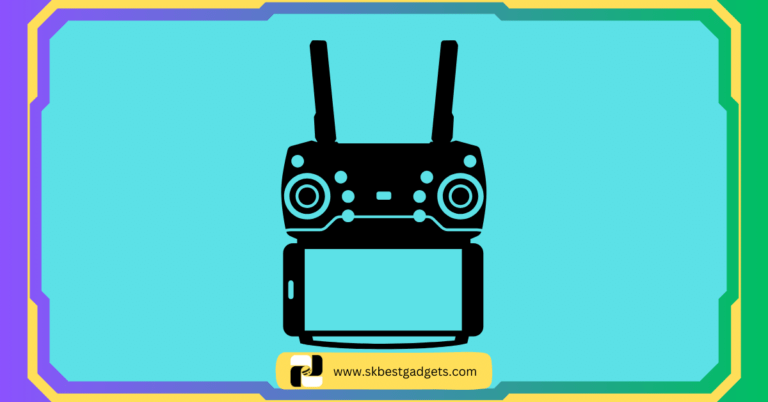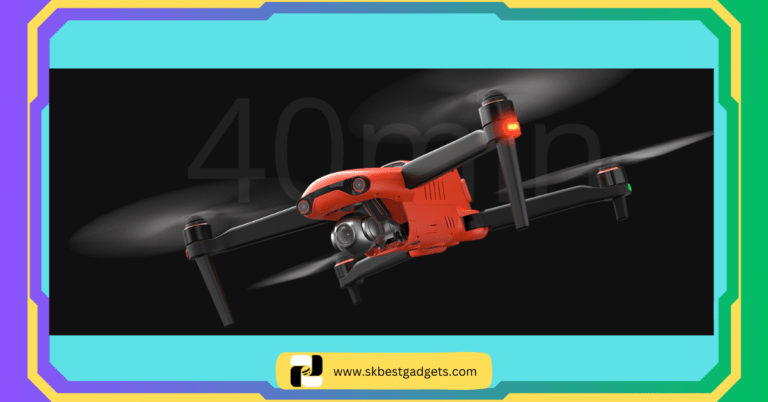What is the Maximum Flight Range of DJI Drones?

DJI, a globally recognized leader in the drone industry, has earned a stellar reputation for its innovation and the high quality of its products.
Established in 2006, DJI has continuously pushed the boundaries of drone technology, making it a preferred choice for both hobbyists and professionals.
The company’s commitment to excellence is reflected in its diverse range of drones, each designed to meet the varying needs of users across different sectors, including photography, agriculture, and infrastructure inspection.
One of the critical specifications that drone enthusiasts and professionals consider is the flight range.
The flight range of a drone refers to the maximum distance it can travel from the remote controller while maintaining a reliable connection.
This specification is pivotal as it influences the drone’s usability in various applications, such as aerial photography, surveying large areas, and delivering goods.
A longer flight range allows for greater flexibility and efficiency, enabling users to cover more ground without needing to relocate frequently.
Over the years, DJI has made significant advancements in extending the flight range of its drones. This progress can be attributed to the continuous development of cutting-edge technologies such as enhanced transmission systems, improved battery life, and sophisticated flight control algorithms.
For instance, DJI’s OcuSync and Lightbridge transmission technologies have been instrumental in achieving seamless and long-range communication between the drone and its controller.
These innovations ensure that DJI drones not only have an impressive flight range but also maintain stable connectivity, which is crucial for safe and effective operations.
In summary, DJI’s dedication to advancing drone technology has resulted in products that offer remarkable flight capabilities.
Understanding the flight range and how DJI has optimized this feature through technological advancements provides valuable insight into why DJI drones are highly regarded in the market.
As we delve further, we’ll explore the specific flight ranges of various DJI drone models and the factors that influence these ranges.
Wondering What Accessories are Available For DJI Drones? Check out our guide to learn more!
Factors Affecting the Flight Range of DJI Drones
The maximum flight range of DJI drones is influenced by a confluence of factors, each playing a pivotal role in determining how far a drone can travel from its controller.
One of the primary determinants is battery life. The capacity and efficiency of the drone’s battery directly impact not only the duration but also the distance a drone can fly.
DJI drones are equipped with high-capacity lithium-polymer batteries that are engineered to maximize flight time, but environmental factors such as temperature and wind conditions can affect their performance.
Signal strength is another critical factor that influences flight range. DJI drones utilize advanced transmission systems like OcuSync and Lightbridge to maintain a robust connection between the drone and the controller.
OcuSync, for instance, provides a more reliable and longer transmission range compared to traditional Wi-Fi-based systems.
This technology is crucial for ensuring uninterrupted communication, especially in areas with potential signal interference.
Environmental conditions also play a significant role. Factors such as wind speed, humidity, and even electromagnetic interference from nearby electronic devices can affect a drone’s flight range.
High winds, for instance, can drain the battery faster as the drone needs to work harder to stabilize itself.
Similarly, flying in areas with high electromagnetic interference can disrupt the signal between the drone and its controller, reducing the effective flight range.
The design of the drone itself, including aerodynamics and weight, also contributes to its maximum flight range.
Lighter drones with streamlined designs can generally achieve greater distances as they require less energy to stay aloft.
DJI continuously innovates in this space, integrating materials and design principles that enhance both flight efficiency and range.
Real-world scenarios further illustrate these points. For example, a DJI Mavic Air 2 might achieve its maximum advertised range in optimal conditions, such as clear skies and open fields with minimal interference.
However, in urban environments with numerous obstacles and potential sources of signal interference, the effective range could be significantly reduced.
Wondering if you can upgrade your DJI drone’s camera? Check out our guide on Can I Change the Camera on My DJI Drone?
Comparison of Maximum Flight Ranges Across Popular DJI Drone Models
The maximum flight range of a DJI drone is a critical specification that influences its utility across various applications.
Different models within DJI’s extensive lineup cater to distinct user needs, and understanding these differences can help users make informed decisions.
Below is a comparative analysis of the maximum flight ranges of popular DJI drone models, including the Mavic series, Phantom series, and Inspire series.
To provide a clearer picture, the following table summarizes the maximum flight ranges of selected DJI models:
| Model | Maximum Flight Range |
|---|---|
| Mavic Air 2 | 10 km |
| Mavic 2 Pro | 18 km |
| Phantom 4 Pro | 7 km |
| Inspire 2 | 7 km |
The Mavic series, known for its portability and advanced features, offers impressive flight ranges. For instance, the Mavic Air 2 boasts a 10 km range, making it suitable for hobbyists and amateur photographers.
The Mavic 2 Pro, with an 18 km range, is ideal for professional photographers and videographers who require extended reach for capturing expansive landscapes.
On the other hand, the Phantom series, particularly the Phantom 4 Pro, offers a 7 km range. While not as extensive as the Mavic 2 Pro, its range is sufficient for most professional applications, including aerial surveying and mapping.
The Phantom series is renowned for its stability and camera quality, which often compensates for the shorter flight range.
The Inspire series, represented by the Inspire 2, also has a maximum range of 7 km. This model is designed for high-end cinematography and professional use, where camera quality and maneuverability are paramount.
The Inspire 2’s range, while adequate, is complemented by its advanced camera systems and robust flight performance, making it a preferred choice for filmmakers.
In summary, while the Mavic series generally offers longer flight ranges, the Phantom and Inspire series provide excellent camera quality and stability.
Users must weigh these trade-offs based on their specific needs, whether it’s for recreational flying, professional photography, or industrial applications.
Curious about how drones create maps? Dive deeper into our explanation of How Does Drone Mapping Work?
Tips for Maximizing the Flight Range of Your DJI Drone
Maximizing the flight range of your DJI drone involves a combination of pre-flight preparation, in-flight strategies, and adherence to legal and safety guidelines.
By paying attention to these factors, you can enhance your drone’s performance and enjoy extended flight distances.
Pre-Flight Preparations
One of the most crucial steps in extending your DJI drone’s flight range is ensuring that your drone’s battery is fully charged before takeoff.
A fully charged battery will provide the maximum power needed for extended flights. Additionally, keeping your drone’s firmware up-to-date is essential. Firmware updates from DJI often include optimizations that can improve battery efficiency and overall performance.
Maintaining Line-of-Sight
During flight, maintaining a clear line-of-sight between the drone and the remote controller is imperative. Obstructions such as buildings, trees, or even hills can disrupt the signal, thereby reducing the effective range.
Always choose open areas for flying to minimize the risk of signal interference. Avoiding densely populated areas also helps in maintaining a strong and stable connection.
Avoiding Interference
Interference from other electronic devices can severely limit your drone’s flight range. Flying in areas with minimal radio frequency interference is advisable.
This includes avoiding places with high Wi-Fi traffic or industrial zones where large machines may emit interfering signals. Using the right frequency band (2.4 GHz or 5.8 GHz) based on your surroundings can also help in optimizing the range.
Legal and Safety Considerations
While trying to maximize your DJI drone’s range, never lose sight of legal and safety considerations. Abiding by local regulations governing drone flights is non-negotiable.
Restrictions such as maximum allowable distances and height limits are put in place for public safety and must be strictly followed.
Additionally, always have a backup plan for safely landing your drone if you encounter unforeseen issues such as signal loss or sudden weather changes.
By adhering to these tips and best practices, you can significantly enhance the flight range of your DJI drone, ensuring a more enjoyable and efficient flying experience.
Wondering if the Mavic 2 Pro is the drone for you? Dive into our in-depth review to find out! Is the Mavic 2 Pro Worth Buying? An In-Depth Review







